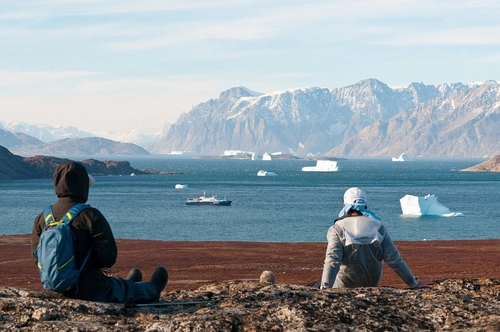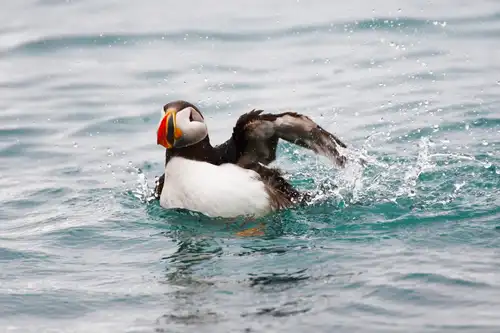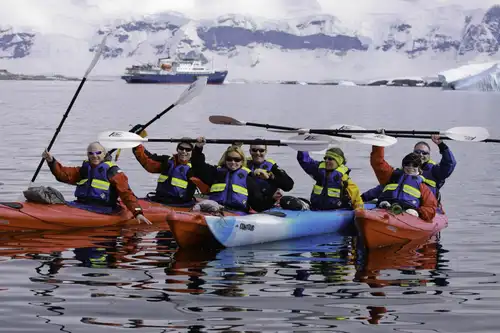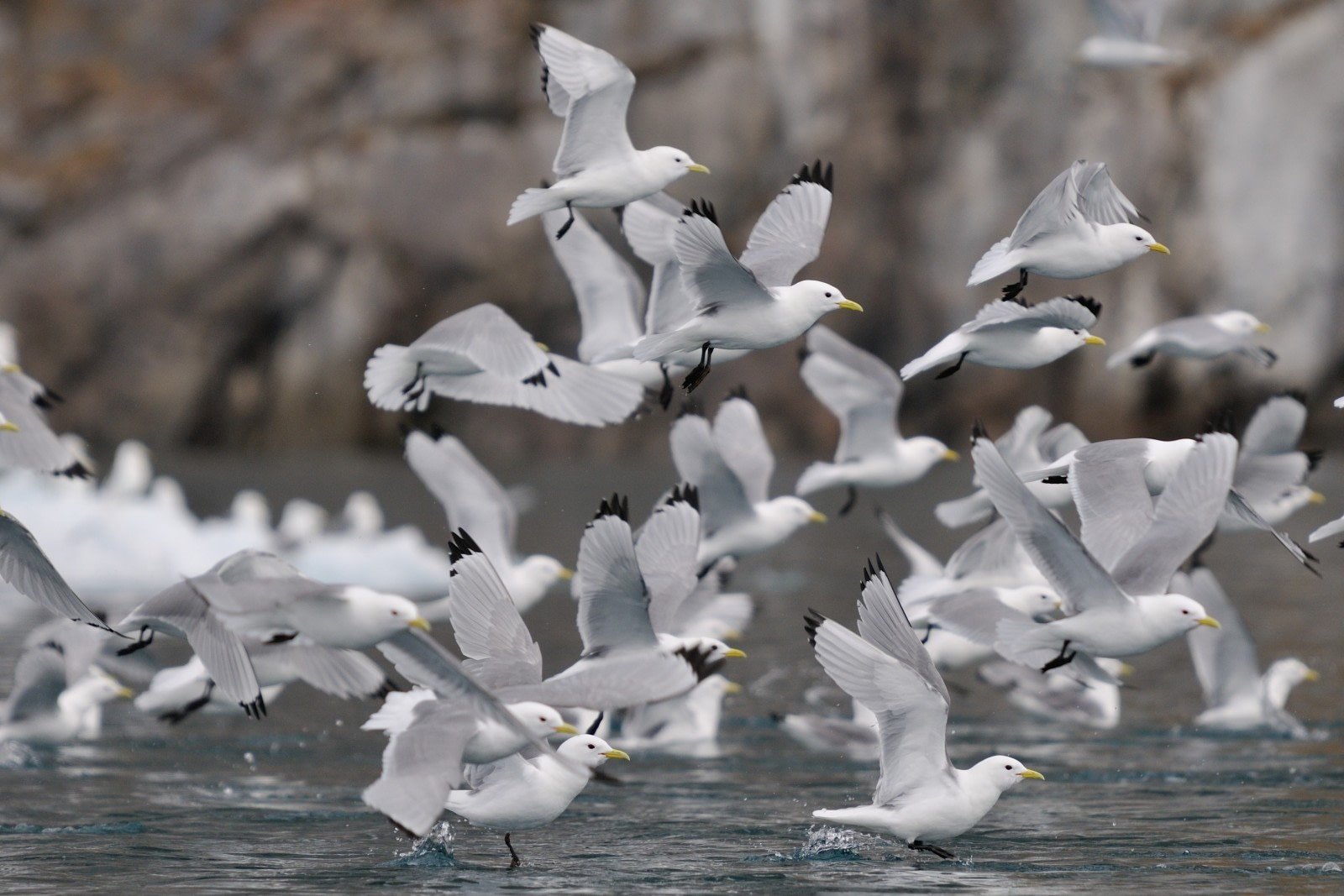A Greenland expedition cruise offers birdwatchers a unique opportunity to capture stunning avian photographs. With over 230 bird species, Greenland boasts both spectacular landscapes and diverse winged wildlife.
Approximately 60 bird species reside in Greenland year-round, while the majority are migratory, visiting at different times of the year. In this article, we'll explore some of the most striking birds found on Earth's largest island.

1. Black guillemot, a well-connected Greenland bird
Black guillemots belong to the auk family, which has the highest population of breeding birds in Greenland. These birds are easily recognizable by their black bodies, red feet, and white wing patches. Related to puffins, black guillemots have a distinctive way of holding the fish they catch.

2. Fulmar, a Greenland bird friendly to our ships
Resembling gulls, fulmars are part of the petrel family. These pelagic birds spend their entire lives at sea and are often seen around Disko Bay and further north. Fulmars are known to follow ships, hoping to find food in their wakes. Besides Greenland, they can also be spotted in other Arctic regions like Svalbard.

3. Great northern diver, the oldest bird species in Greenland - and the world, for that matter
Also known as “loons,” these birds are famous for their appearance on the Canadian one-dollar coin, the “loonie.” They have black heads, black-and-white patterned bodies, and a gracefully curving neck. Great northern divers have some solid bones, allowing them to dive deeper, but this makes them heavier and requires a runway approach for takeoff.

4. Ptarmigan, a well-disguised Greenland bird
Ptarmigans are masters of camouflage, making them a challenge for birdwatchers. Their coloring changes with the seasons: brown with dark stripes in summer and white in winter, blending in with grasses and rocks or ice and snow. During “ptarmigan years,” their breeding activity increases, offering a great chance to photograph them.

5. Red-throated divers, a star Greenland bird
Known as red-throated loons, these birds are the most widely distributed of the diver family. They have a creamy-brown head and a red throat during mating season, which turns gray in winter. Their Latin name, Gavia stellata, means “starry,” referring to the white star-like spots on their back. The term “loon” likely comes from words meaning “clumsy” or “lame,” describing their awkward movements on land.

The best voyages for seeing Greenland birds
While many Arctic cruises offer birdwatching opportunities, Greenland trips provide the best chance to see these birds and many others, along with some of the most dramatic coastlines, mountains, and fjords on the planet.
Prepare your camera, hone your bird photography skills, and join us on an unforgettable journey to this extraordinary Arctic destination.





Related Trips
Blog



Arctic on Foot: Hiking and Snowshoeing the Far North

Polar bear feast

The polar bear: king of the Arctic food chain

A Look Into the International Research Stations of Antarctica

Antarctica: When to Visit, How to Plan, What to Expect

Polar Bear Sets Impressive New Diving Record

Polar bear encounter in Spitsbergen

Flowers in Antarctica

Narwhals: the Aquatic Unicorns of the Arctic

A Day on m/v Plancius

First to the North Pole: Five Failed but Brave Expeditions

Five Reasons to Love St. Helena

Greenland's History: When Vikings Ruled the Ice Age

Get to Know Your Ice

Puffins: Clown Birds of the Atlantic

Polar Amore: 14 Wildlife Pics to Warm up Your Valentine’s Day

A Day of Basecamp in Antarctica – Paradise Harbour

Visiting the Nearly Unknown: New Zealand’s Campbell Island

South Georgia in Spring






 20 Days / 19 Nights
20 Days / 19 Nights

